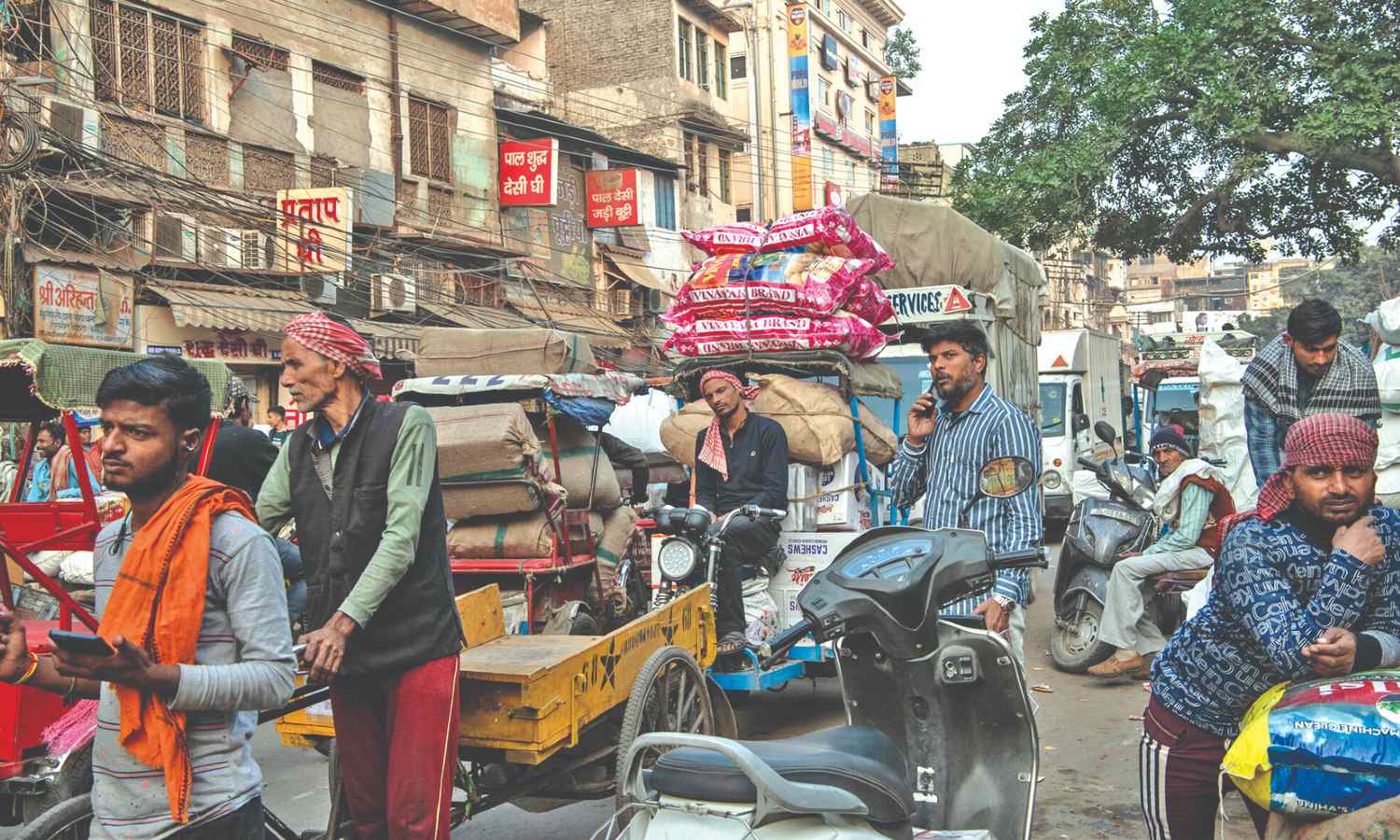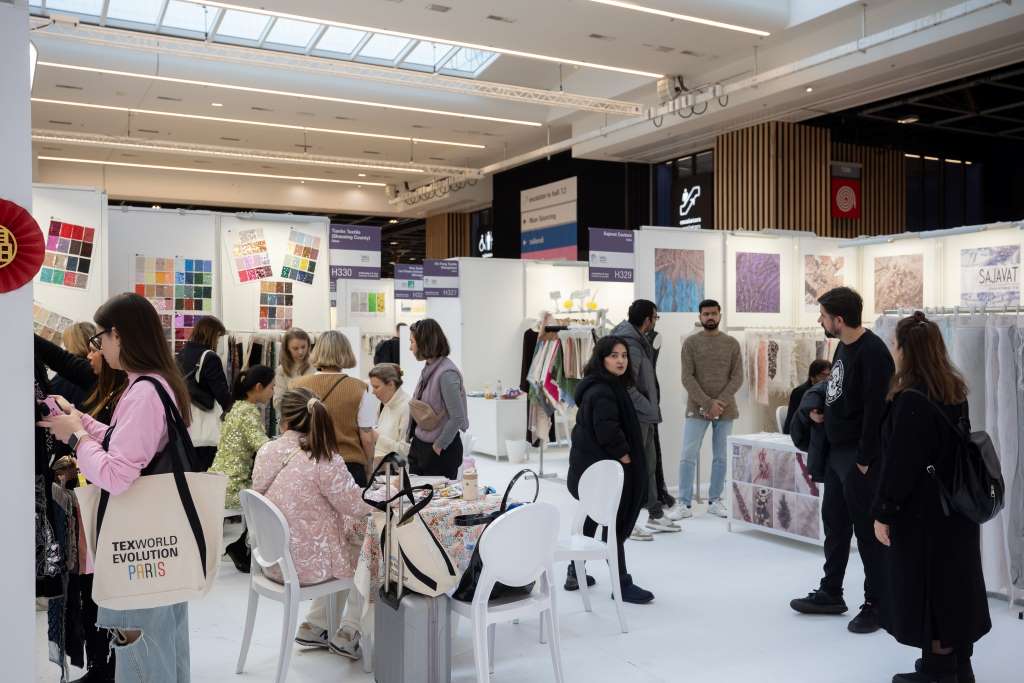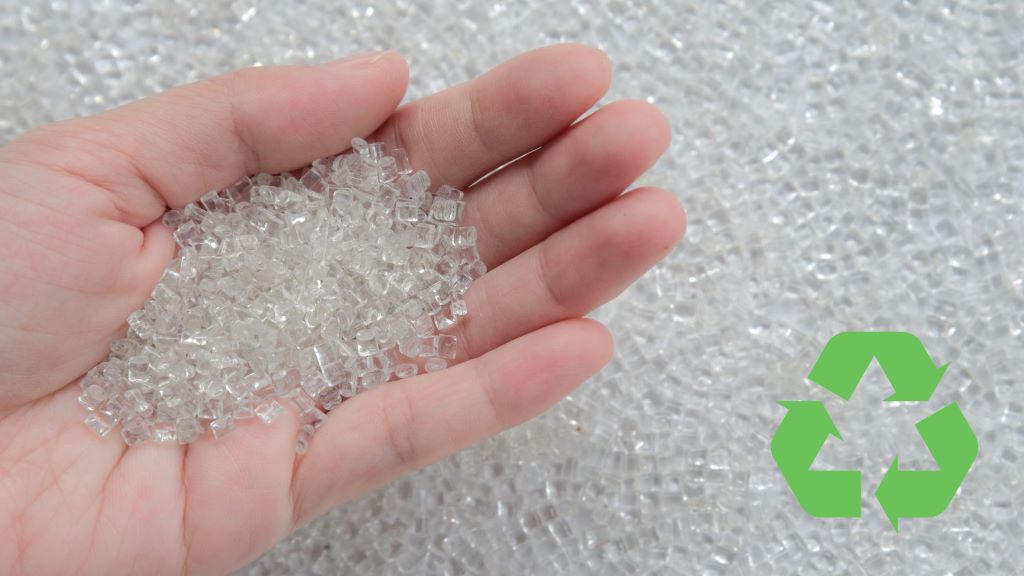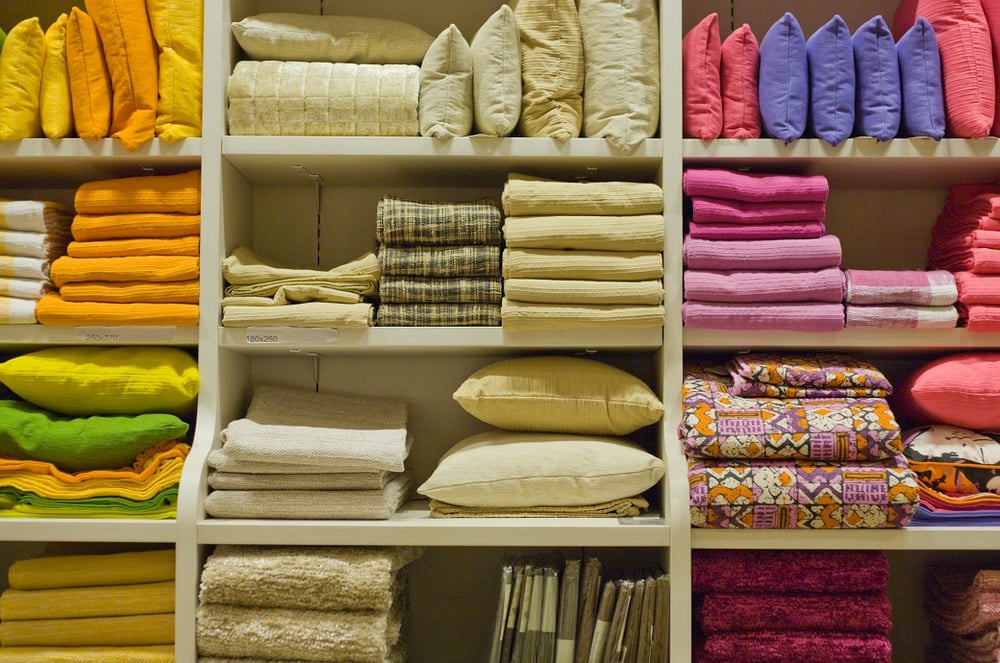FW
India continues to dominate the global cotton market, reaffirming its position as the world's largest cotton producer in 2024. With an annual production of a staggering 5.9 million tons, the nation holds a commanding 25 per cent share of the global cotton output. Boasting vast cultivation across 120.69 lakh hectares, India's cotton industry thrives, propelled by states like Gujarat and Maharashtra, known for their adoption of sustainable farming practices.
The textile sector in India, the second-largest employer in the country, plays a pivotal role in driving exports, further solidifying India's stature as the world's second-largest exporter of textiles and clothing. Anticipating a surge in production to 7.2 million tonnes by 2030, India is poised for continued dominance in the global cotton market.
Following closely behind India, China secures its position as the second-largest cotton producer, contributing 5.73 million tons to the global output. With cotton cultivation covering 3.0 million hectares, China's well-established textile industry and extensive population bolster its influence in both domestic and international cotton markets. Notably, China cultivates a mix of Bt and non-Bt cotton varieties, predominantly in its northern and northwestern regions, with Xinjiang Uygur Autonomous Region leading the production charge.
The United States claims the title of the world's third-largest cotton producer, with an impressive production of 3.96 million tons. Renowned for its quality and long fibers, U.S. cotton, predominantly Upland and Pima varieties, commands approximately 35 per cent of global cotton exports. Spearheaded by states like Texas, California, and Mississippi, the U.S. cotton industry leverages advanced technology and genetic research to enhance yields and fiber quality, maintaining its prominence in the global market.
Top 10 Cotton Producers in 2024:
• India: 5.9M tons
• China: 5.73M tons
• United States: 3.96M tons
• Brazil: 2.68M tons
• Pakistan: 981K tons
• Uzbekistan: 940K tons
• Turkey: 833K tons
• Australia: 608K tons
• Argentina: 349K tons
• Mali: 340K tons
In a landscape shaped by these top producers, the global cotton industry continues to evolve, driven by innovation, sustainability, and market dynamics.
Trutzschler, in collaboration with Balkan Textile Machinery Inc.Co., unveiled the Truecycled solution at ITMA 2023, Milan, marking a significant stride in textile recycling. With increasing inquiries for recycling systems, Trutzschler emerges as a frontrunner in addressing the global textile waste crisis.
Trutzschler pioneers a comprehensive approach to textile waste management, offering a complete system from mechanical recycling to spinning preparation. By optimizing tearing and spinning processes, manufacturers gain a competitive edge and ensure premium quality output.
Georg Stegschuster, a textile recycling expert, emphasizes the importance of fine-tuning tearing and spinning processes to mitigate fiber shortening. Trutzschler’s technology, exemplified by the TC 30Ri card and IDF 3 draw frame, balances gentleness with effectiveness, crucial for handling short fibers and achieving superior product quality.
Trutzschler’s Truecycled solution heralds a new era in textile recycling, offering not just machinery but a strategic approach to sustainability. With innovative technologies and expert insights, Trutzschler empowers manufacturers to enhance the value of recycled materials without compromising quality. As the industry seeks solutions to the textile waste crisis, Trutzschler leads the charge towards a more sustainable future.
Textile exports from Pakistan increased by 3.56 per cent Y-o-Y to $1.36 billion in Mar’24 as against $1.31 billion in Mar’23, as per data from the State Bank of Pakistan (SBP).
On a M-o-M basis, Pakistan’s textile exports increased by 4.45 per cent in Mar’24 compared to exports worth $1.3 billion in Feb’24.
Cumulatively in 9MFY24, the textile exports decreased by 5.31 per cent Y-o-Y to $12.25 billion compared to $12.94 billion in 9MFY23.
In Mar’ 24, textile group products accounted for 54.04 per cent of Pakistan’s total exports. Some of the most exported categories in this group included Knitwear with exports rising by 5.97 per cent to $326.19 million, Readymade Garments with exports increasing by 1.07 per cent to $301.45 million, and Bed Wear with exports expanding by 7.47 per cent to $229.95 million.
On the other hand, the exports of leather manufacturers declined by 1.07 per cent Y-o-Y to $49.42 million in Mar ‘24.

China's luxury e-commerce market, once a golden goose for high-end brands, is facing a new challenge: skyrocketing return rates. Shoppers are exploiting loopholes in e-commerce platforms like Alibaba's Tmall to snag discounts and fleeting status symbols, only to return the items shortly after. For example, during last year's ‘Singles day’ shopping festival, high-end labels like Ralph Lauren and Burberry saw a sharp increase in sales on Alibaba's Tmall platform, only to have a whopping 75 per cent of that value vanish within days due to cancellations and returns. This trend, far exceeding the industry average of 20-30 per cent, is forcing a rethink for luxury brands in the world's second-largest economy.
The culprit: China's economic slowdown. The middle class, a key driver of luxury spending, is feeling the pinch and focusing on discounts or shying away from big-ticket purchases altogether. Tmall's aggressive promotions, while boosting initial sales figures, incentivize ‘gaming the system’ buying expensive items to qualify for discounts with the intention of returning them later.
High return rates threaten sales growth
Brunello Cucinelli's return rates on Tmall soared to 69 per cent in Q1 2024, up from 59 per cent a year prior, and LVMH owned Marc Jacobs saw a similar jump. This phenomenon isn't limited to a few brands. Richemont's Chloé, Ralph Lauren, and Mulberry are all experiencing similar spikes. So what could be the reason for this sudden change in consumer behaviour?
Gaming the system: Tmall's promotional campaigns with discounts incentivize high-value purchases. Some shoppers might be exploiting this by buying expensive items solely to qualify for discounts, with the intention of returning them later.
Shifting consumer behavior: China's economic slowdown is impacting the middle class, traditionally a strong contributor to luxury spending. This group is now more price-conscious and might be resorting to "renting" luxury items for short-term use through returns.
Promotional fatigue: Frequent discounting can erode brand image, making luxury less appealing to true high-end spenders.
‘Try-and-return’ culture: E-commerce giants like Tmall and JD.com's hassle-free return policies, including free return shipping and "no-reason" returns within seven days, encourage some to treat luxury purchases as rentals for special occasions.
The impact
Indeed, this has had a major impact on retail sales as its weakening growth. In fact, high return rates create a misleading picture of actual sales, making it difficult to gauge real consumer demand. LVMH, the world's biggest luxury conglomerate, reported a significant slowdown in fashion and leather goods sales in Q1 2024. Gucci's slumping China sales recently wiped billions off Kering's market value. However, shifting focus to high-net-worth individuals has some brands. Like Hermes and Dior, with their limited online presence and focus on cultivating loyal high-end customers, are weathering the storm better. Indeed, frequent participation in discount campaigns could damage brand exclusivity and appeal to high-paying customers.
Strategies to cope
Luxury brands are adapting numerous strategies to move ahead. To begin with, they are investing in concierge services and private sales. Building stronger, personalized relationships with wealthy customers. Also, they are focusing on immersive experiences, creating exclusive events and brand interactions to cultivate brand loyalty. Leveraging data analytics to understand customer behavior and identify suspicious purchase patterns can help tackle fraudulent returns.
Analysts predict a slowdown in China's luxury market growth in 2024, with HNWIs becoming the primary drivers. The future of luxury e-commerce hinges on brands' ability to adapt to this changing landscape and develop strategies that foster genuine customer loyalty.
With the European Union decided against extending the EBA tenure beyond 2029, Bangladesh now needs to ensure compliance with GSP+ conditions for duty-free access to the apparel market
However, the latest draft GSP policy pose a potential risk to Bangladesh's competitiveness in the EU market as it increases the cost of Bangladeshi apparel for EU consumers.
Acknowledging the gravity of the situation, Charles Whiteley, the EU's Ambassador to Bangladesh, emphasises on the importance of ensuring that Bangladesh's efforts to meet GSP+ conditions do not go in vain due to technicalities.
Heavily dependent on the EU market, Bangladesh exports most of its apparel products to the countries in the Union. The EU continues to deny EBA extension to Bangladesh despite the country’s impending graduation from Least Developed Country status in 2026 and the subsequent end of EBA privileges in 2029. Whiteley urges the country to focus on meeting GSP conditions rather than seeking further extensions to EBA.
Whiteley emphasizes the importance of inclusive dialogue and partnerships in addressing labor issues, highlighting ongoing discussions and the tripartite mechanism involving the government, trade unions, and businesses.
Looking ahead, Whiteley stresses the need for adherence to timelines outlined in the National Action Plan on labor issues, with upcoming dialogues in May providing an opportunity to assess progress and engage with key ministries.
Kenya plans to expand textile and apparel (T&A) exports to $1 billion (Ksh 133 billion) by 2027, says William Ruto, President.
Currently, Kenya has over 100 companies employing 66,000 people directly in its textile and apparel sub-sector, adds Ruto. Apparel exports from the country currently stand at about Ksh 51 billion, according to a report by the Kenya Association of Manufacturers.
Kenya is the largest exporter of garments under the African Growth and Opportunity Act (AGOA) program, with the United States being the largest export destination for its apparel.
The country supplies its apparel to all major brands in America such as H&M, Levi’s, JC Penny and Wrangler.
The US has invested over $11 million (Ksh. 1.47 billion) in grants through the USAID to create jobs, increase trade, and strengthen Kenya’s textile and apparel sector. The investment will help expand the operations of major Kenyan brands such as Vivo, Ikwetta and Ubuntu. The investment aims to grow the operations of Kenya's apparel manufacturing companies like Hela, MAS, Best, Atraco, Royal, Simba, UAL, and Mega, adds Ruto.
Another of the investment’s objective is to bring new vertical capabilities to Kenya’s textile and apparel subsector, with the entry of companies like Kohinoor and Nexgen into the manufacture of elastics and labeling. Additionally, these companies have committed to invest $77 million (Ksh.10.3 billion) in the sector.
This will help Kenya generate an additional $330 million in apparel exports and create over 20,000 new jobs by the end of 2025, notes Ruto.
The opening of Nexgen Packaging EPZ factory adds to the 39 apparel companies currently based in Kenya’s Export Processing Zones. The company produces garments for top fashion names such as the Under Armour sportswear brand, New Balance, Ralph Lauren, J Crew and Kate Spade.
Fashion retailer Express Inc. has filed for Chapter 11 bankruptcy in the US, announcing plans to shutter over 100 stores, including all UpWest locations. With assets and liabilities ranging from $1 billion to $10 billion, the company cited soft consumer demand and increased price sensitivity as factors contributing to its financial struggles. Mark Still has been appointed as the new CFO, succeeding his role as interim CFO since November 2023.
Express aims to close about 95 Express retail stores and its entire UpWest chain, effective April 23. Currently operating approximately 530 Express retail and Express Factory Outlet stores in the U.S. and Puerto Rico, along with 12 UpWest stores, the retailer faces significant restructuring challenges.
Despite the bankruptcy filing, Express secured $35 million in new financing from existing lenders. It plans to continue business operations while undergoing a court-supervised sale process.
Express revealed receiving a non-binding letter of intent from a consortium led by WHP Global, which holds a 7.4 per cent stake in Express and owns brands like Toys "R" Us and Anne Klein. The proposed sale aims to offload a substantial portion of Express' retail stores and operations.
In an innovative collaboration, Lenzing Group, a global leader in wood-based specialty fibers, and Gokul Tex, a prominent fabric manufacturer from Surat, Gujarat, unveiled their latest fabric collection crafted from Tencel fibers at the 4th CMAI FAB Show 2024, held from April 15th to 17th, in Mumbai. This partnership signals a significant stride in advancing sustainable fashion within the Indian market.
Gokul Tex, renowned for its proficiency in digital printed fabrics, has integrated Lenzing's sustainable fibers into its repertoire since 2010. Their joint showcase at the CMAI FAB Show underscores their shared commitment to providing eco-conscious solutions in response to the textile industry's evolving demands.
The exclusively Tencel fiber-based collection seamlessly merges aesthetics, performance, and sustainability, featuring a spectrum of products from luxurious Tencel lyocell fibers to innovative Tencel Luxe branded lyocell filament yarns. This fusion has empowered Gokul Tex to pioneer fabrics that resonate with the discerning tastes of the Indian market, eliciting an enthusiastic response from attendees including emerging brands, distributors, and garment manufacturers.
With over 200 exhibitors and 12,000 trade visitors, the three-day event served as a dynamic platform for Lenzing Group and other industry players to showcase their latest offerings and engage with diverse customer needs.
Avinash Mane, Senior Commercial Director of AMEA & NEA region, Textiles Business, Lenzing Group, emphasized the collaboration's role in driving sustainability and innovation within India's textile industry. Similarly, Subhash Dhavan, Director of Gokul Tex, praised the exceptional qualities of Tencel fibers and expressed enthusiasm for continuing their journey of innovation alongside Lenzing.
As the curtains close on the successful CMAI FAB Show 2024, Lenzing Group and Gokul Tex extend their appreciation to attendees and invite industry stakeholders to join them in shaping a more sustainable and stylish future for the textile industry.

The Women’s Apparel market stands as a dynamic force within the global fashion industry, embracing a plethora of clothing and accessories to suit diverse style preferences and lifestyles. Reflecting evolving fashion trends, cultural influences, and consumer demands, it serves as a canvas for personal expression and identity. With a forecasted expansion at a CAGR of 4.9 per cent, reaching $5,958.6 million by 2031 according to Persistence Market Research, this market thrives amidst the influence of social media, e-commerce, and sustainability concerns.
Factors driving market growth
Shifting Fashion Trends and Consumer Preferences: Fashion trends evolve incessantly, propelled by cultural shifts and social media. Women's apparel brands adapt to these trends, offering collections that resonate with consumers' desires for style, comfort, and versatility.
Rise of E-Commerce and Digital Retailing: E-commerce platforms redefine the shopping experience, providing convenience and personalized options. Features like virtual try-ons enhance accessibility and drive the growth of digital Women’s Apparel market.
Influence of Social Media and Influencer Marketing: Social media platforms wield significant influence over fashion preferences. Collaborations between brands and influencers amplify brand reach and drive product discovery, reshaping the digital landscape of the Women’s Apparel market.
Emphasis on Sustainability and Ethical Fashion: Growing awareness of environmental issues fuels demand for sustainable and ethically produced apparel. Consumers seek transparency and eco-friendly practices, favoring brands that prioritize ethical sourcing and environmentally responsible manufacturing.
Fashioning trends with style and substance
The women’s apparel market is a vibrant tapestry influenced by changing trends, consumer preferences, and societal norms. Inclusivity emerges as a significant opportunity, with rising demand for clothing options that cater to diverse body types and backgrounds. Manufacturers can capitalize by offering inclusive sizing and adaptive clothing, fostering an empowering shopping experience for all women.
Moreover, sustainability drives consumer interest, leading to a demand for eco-friendly practices. Brands adopting sustainable materials and transparent manufacturing processes build trust and loyalty among environmentally conscious consumers, contributing to positive change in the fashion industry.
Additionally, innovation fuels market growth, with a focus on functional and versatile designs. Advanced fabrics and technology-driven solutions meet the needs of modern consumers, enhancing comfort and convenience in clothing choices.
Market trends
The demand for sustainable and ethically produced clothing is on the rise, influencing purchasing decisions and shaping brand loyalty among environmentally conscious consumers.
Online platforms and digital marketing play a significant role in shaping consumer preferences and driving fashion trends, offering seamless shopping experiences for digital-savvy consumers.
Market challenges
The challenge lies in balancing the demand for fast, affordable fashion with sustainability goals. Addressing issues such as textile waste and labor exploitation requires investment in sustainable practices and circular economy initiatives.
Historically, limited size ranges have excluded many body types from mainstream fashion offerings. Apparel brands are responding by expanding size options and embracing body-positive messaging to promote inclusivity.
Latest developments
Recent advancements focus on innovation and personalization, with brands investing in sustainable materials and offering customizable options. Circular fashion initiatives further promote sustainability, while personalized shopping experiences enhance customer engagement and satisfaction.
The Women’s Apparel market stands at the intersection of style, sustainability, and innovation. With evolving trends and consumer demands, brands have the opportunity to shape the future of fashion while embracing inclusivity, sustainability, and technological advancements. As the market continues to evolve, adaptation and innovation will be key to staying ahead in this dynamic industry.










